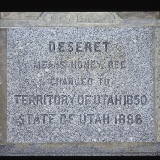| A temple shoe and Nauvoo Temple plate are on display at the Smithsonian Institution National Museum of American History in Washington, D.C., on Friday, April 22, 2022. Photo by Jeffrey D. Allred, courtesy of Church News. Copyright 2022 Deseret News Publishing Company. | 1 / 6 |
This story appears here courtesy of TheChurchNews.com. It is not for use by other media.
By Jon Ryan Jensen, Church News
Joseph Smith experienced the First Vision more than 300 miles to the north of the capital city of the United States of America. When Church members moved west to Kirtland, Ohio, they again lived just more than 300 miles from Washington, D.C. But that was as close as the Church ever was — as a body — to the nation’s capital.
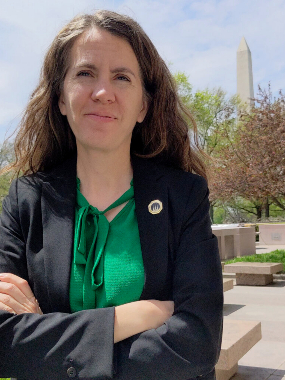
Church-in-D.C.
Emily Utt, historic sites curator for the Church History Department, stands outside the Smithsonian Institution’s National Museum of American History in Washington, D.C., on April 21, 2022. Photo by Jon Ryan Jensen, courtesy of Church News. Copyright 2022 Deseret News Publishing Company.But the Church has ties to the country and the home of its federal government. Those ties include ones found in the monuments and several pioneer-era artifacts in the Smithsonian Institution.
Emily Utt, historic sites curator for the Church History Department, lived in the Washington, D.C., area and participated in tours of the Washington D.C. Temple.
She spoke with the Church News both on the grounds of the temple and at the National Mall.
Brigham Young and the Washington Monument
Standing outside the Smithsonian Institution’s National Museum of American History, Utt looked toward the Washington Monument and reflected on the Church.
“Washington, D.C., actually has lots of really great connections to the Church,” she said. “There are pieces of Utah literally embedded in the monuments of Washington, D.C.”
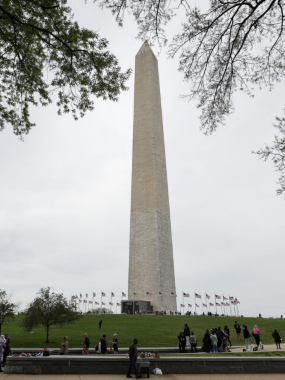
Church-in-D.C.
The Washington Monument in Washington, D.C., on Friday, April 22, 2022. Photo by Jeffrey D. Allred, courtesy of Church News.Copyright 2022 Deseret News Publishing Company.She’s not speaking spiritually or metaphorically.
“When they were building the Washington Monument, every state was invited to give a piece of stone for the building of the monument,” Utt said.Utah didn’t have marble or other traditional stone used to build the monument. A different solution had to be found.
“Brigham Young decided to send a piece of stone from the same quarry that would eventually build the Manti Temple,” Utt said.
Brigham Young, who was the governor of the state in addition to his role as President of the Church, didn’t just send the stone to Washington, D.C., though.“On that piece of stone, he wrote, ‘Holiness to the Lord,’ so inside the Washington Monument is a little piece of holiness, a little piece of the temple, and a little piece of Utah.”
Brigham Young didn’t actually write on the stone. A member of the Church named William Ward carved the words into it. When he was done, the next step was getting the stone, which was 3 feet long, 2 feet wide and 6.5 inches thick, back to the East Coast.
The golden spike — connecting the railroads that would connect the eastern and western parts of the country by rail — wouldn’t be driven in Utah for another 15 years. That meant the piece of stone had to be taken by a team of oxen back to Washington, D.C. It arrived there after a summer-long journey in September of 1853.
This stone, and the others contributed by other states, aren’t publicly visible at this time. (An online gallery is available on the National Park Service website at nps.gov.) They line the interior stairway of the monument that is closed for security reasons.
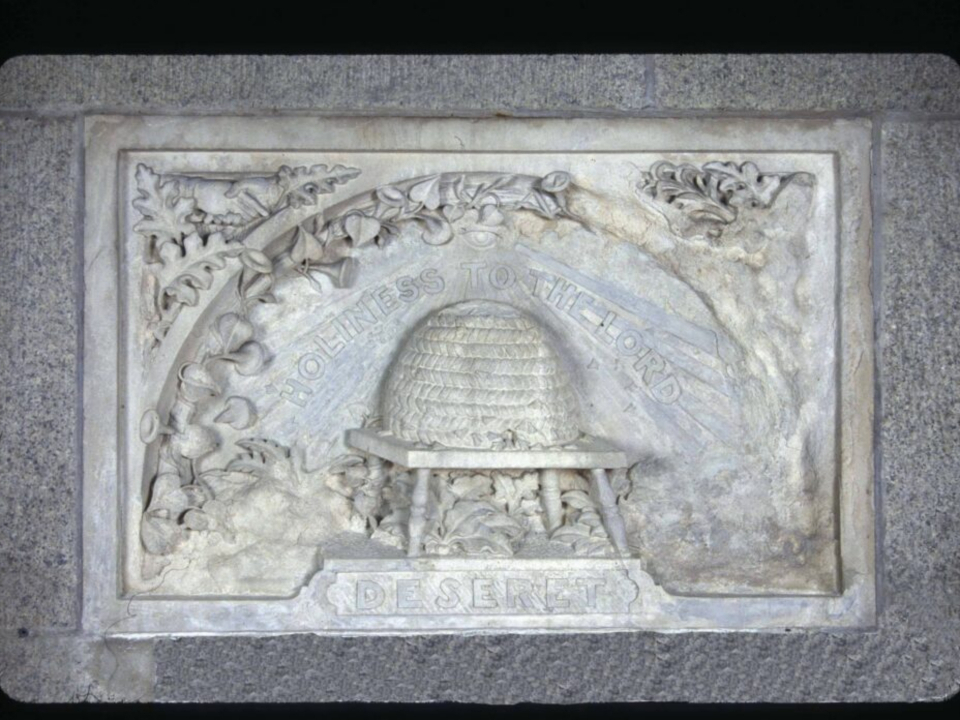
Church History at the Nation’s Capital
“Some of my favorite items are in the Smithsonian,” she explained. “They have a piece of the Nauvoo Temple called a sunstone.”
The museum has a display that includes one of the 30 original 2.5-ton sunstones from the Nauvoo Temple. When that sunstone was purchased for $100,000 in 1989, it was one of the highest prices paid by the Smithsonian Institution for a piece that would be displayed in one of its museums.
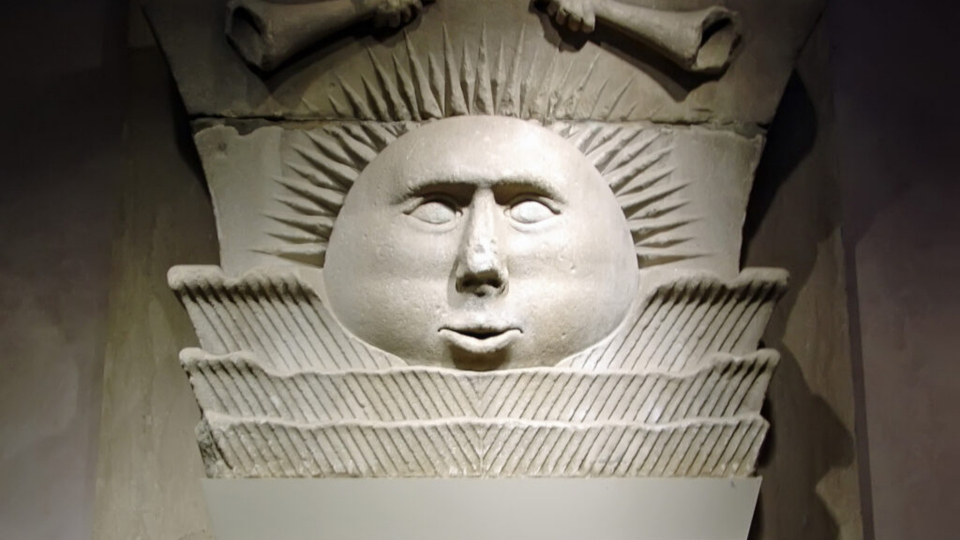
Church-in-D.C.
This original sunstone from the Nauvoo Temple is owned by the Smithsonian Institution in Washington, D.C. Photo by Kenneth Mays, courtesy of Church News. Copyright 2022 Deseret News Publishing Company.
“One of the exhibits on display right now is a plate,” Utt said.
The plate was a commemorative keepsake commissioned by a member of the Church, Lucius Scovil, prior to the Saints leaving Nauvoo in 1839.
Scovil had 500 plates made so Saints could “take a piece of the temple with them as they went west,” Utt explained.
Without easily accessible photographs, this was one of the few ways the Saints could remember the beauty of their hard work physically and spiritually in building the Nauvoo Temple.
A plate is also a fitting keepsake for someone like Scovil to have had made because he and his wife, Lury Snow Scovil, owned a bakery in Nauvoo that they opened in 1843.
Three years after opening the bakery, Lury died after giving birth to twins. The two babies also did not survive.
Later that year, in 1846, Scovil left Nauvoo and his bakery to travel west with a party of Saints. While en route, Lucius was called to serve a mission in England, which he served from July 1846 to July 1847. While there, he had the plates made, Utt said.
“Another item I love is a temple slipper,” Utt said.
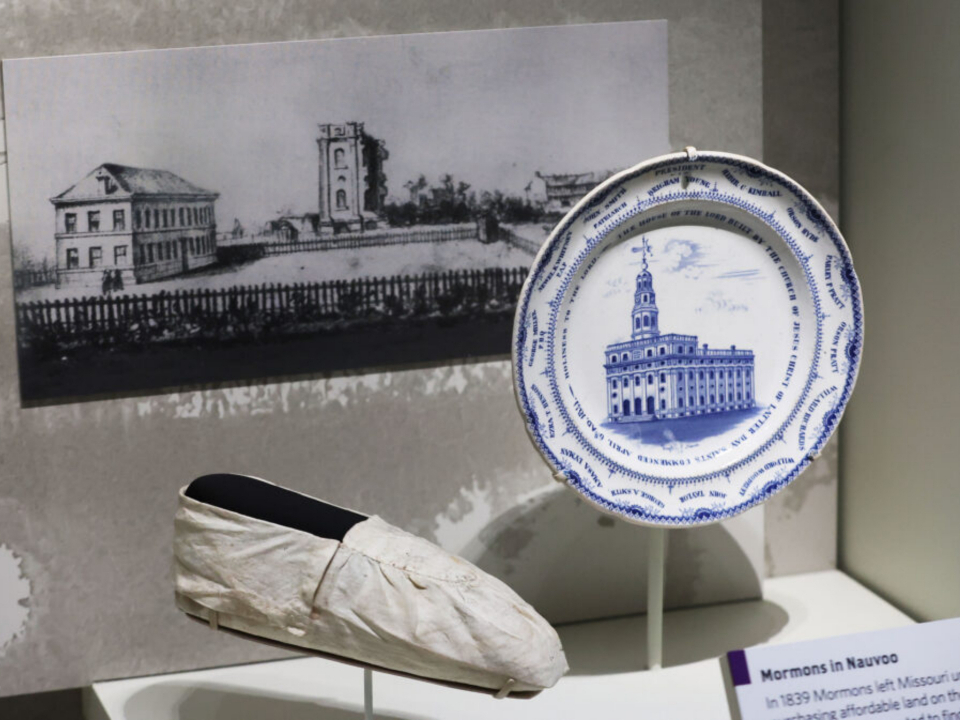
Church-in-D.C.
A temple shoe and Nauvoo Temple plate are on display at the Smithsonian Institution National Museum of American History in Washington, D.C., on Friday, April 22, 2022. Photo by Jeffrey D. Allred, courtesy of Church News.Copyright 2022 Deseret News Publishing Company.
White slippers and clothing worn in the temple were not available through Church Distribution stores in the 19th century. At that time, the Relief Society was responsible for providing patterns to members who would make their own clothing with white fabric in order to attend the temple.
“I like to look at it and compare it to what I wear when I go to the temple … and think about how similar we actually are even though we’re separated by time,” she said.
One of the reasons this slipper is unique is because of the custom that individuals are buried after death in their temple clothing. The existence of such early articles of temple clothing are, therefore, hard to come by.
Little is known about the original owner of this slipper, Utt said. But it was likely used in the St. George Temple around the year 1890. That temple was the first to offer proxy ordinance work beyond baptisms for the dead.
Other items at the Smithsonian include a 1921 printing of the Book of Mormon, an image of Joseph Smith addressing the Nauvoo Legion (courtesy of the Church History Library), and an image of the Nauvoo Temple after it was destroyed by arson around 1850 (courtesy of the Harold B. Lee Library at Brigham Young University).
Copyright 2022 Deseret News Publishing Company.




